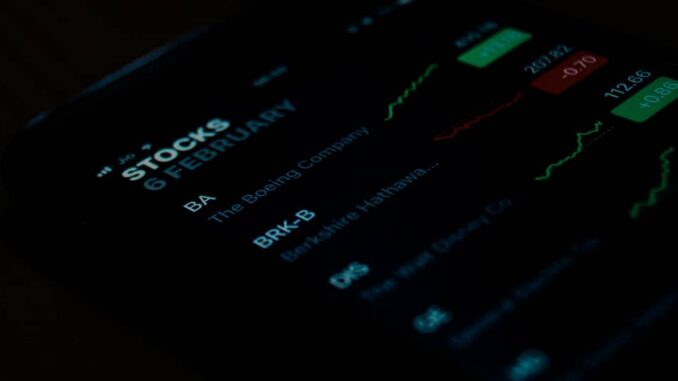
What is Interest Rate?
Before delving into the advantages and disadvantages of an increase in interest rates, it’s crucial to gain a comprehensive understanding of what interest rates entail within the context of Nigeria’s banking sector
Interest rates, in the context of the Nigerian banking sector, refer to the cost of borrowing money or the return earned on investments. These rates are set by financial institutions, primarily central banks, and play a pivotal role in shaping the economy’s overall financial landscape. Interest rates have a significant impact on various aspects of the banking sector, the economy, and the lives of individuals and businesses.
The Nigerian banking sector, like any other, operates on the principle of earning profits from the spread between the interest rates at which they lend money (lending rates) and the rates they offer on deposits (deposit rates). When individuals or businesses borrow money from banks, they are charged interest on the borrowed amount, which constitutes the lending rate. On the flip side, individuals and businesses earn interest on their deposits in savings or fixed deposit accounts, which constitutes the deposit rate.
What is Monetary Policy Rate (MPR)
In Nigeria, the Central Bank of Nigeria holds the authority to determine the Monetary Policy Rate (MPR), a decision that holds significant implications for virtually every facet of the economy. The MPR serves as the cornerstone for all other interest rates in the financial market and the broader economy. As of January 2023, the CBN has set the official MPR at 18%, up from the previous rate of 17.5%. This MPR decision influences economic dynamics and pricing dynamics in Nigeria through various channels.
Moreover, the interest rates prevailing in the banking sector can be classified into seven primary categories. These categories are defined by their operational mechanisms and their implications for both lenders and borrowers, taking into account the potential impact of inflation on these dynamics.
- Compound interest
- Fixed interest rate
- Variable interact rate
- Simple interest rate
- Prime interest rate
- Discounted interest rate
- Annual interest rate
Compound interest rate
As the term implies, compound interest is an interest that accumulates at regular intervals. In simpler terms, this type of interest yields more profits for the lender.
For instance, consider a scenario where a farmer borrows ₦200,000 from a bank at a compound interest rate of 5% for 5 years. In the first year, the farmer would need to repay ₦210,000. However, in the second year, the ₦210,000 becomes the new base loan amount, and 5% interest would be applied to it. This cycle continues, with interest accumulating on the updated loan amount each year. This compounding effect causes the total repayment amount to increase gradually over the 5-year loan period
Fixed interest rate
In contrast to compound interest that accumulates over time, fixed interest remains constant throughout the loan term.
For instance, let’s say a company secures a loan with a fixed interest rate of 10% for a duration of 5 years. This implies that over the entire 5-year period, the company will consistently repay the loan with a 10% interest rate. Unlike compound interest, where the interest amount evolves as the loan progresses, fixed interest maintains a steady rate from the start to the end of the loan term.
Variable interest rate
This has to do with base interest rate decision mostly carried out by the central bank. Base interest rate or prime rate decides the level of increase or decrease on the rate of Interest by a borrower. Unlike the fixed interest rate which doesn’t change or been affected by any economic factor, the variable interest rate changes even if after a borrower has taken a loan. This change sometimes benefits the borrowers and the lenders as the case may be.
To provide an example, consider a loan obtained at a variable interest rate of 10% at a time when the prime rate stood at 17%. If the base rate later drops below the initial 17%, the borrower will experience a reduction in interest. This circumstance proves advantageous for borrowers as they are obligated to pay a lesser amount of interest compared to the initial calculation.
Conversely, if the base rate increases beyond the initial 17% subsequent to taking the loan, the borrower will face a disadvantage. This leads to higher interest payments than initially expected. The variability of the interest rate means that borrowers may encounter changes in their repayment amounts based on fluctuations in the base rate.
Simple interest rate
This type of interest rate is refreshingly straightforward, devoid of complications or confusion. The calculation is as simple as multiplying the borrowed or lent amount by the agreed interest rate and the number of years the loan spans.
For example, if someone lends #50,000 at a simple interest rate of 8% for a loan term of 3 years, the interest can be calculated as follows: Interest = Principal Amount × Interest Rate × Time Interest = #50,000 × 0.08 × 3 = #12,000
In this uncomplicated scenario, the interest amounts to #12,000 over the 3-year loan period. The simplicity of the calculation is a defining feature of this type of interest rate.
Prime interest rate
This particular interest rate isn’t accessible to all; it’s a privilege often extended by banks or corporate entities as a goodwill gesture. What sets this interest rate apart is its unique value, which typically tends to be considerably lower than the standard rates offered to other customers.
For example, let’s say a bank offers a preferential interest rate of 3% to its long-standing customers who have maintained a healthy relationship with the bank for a significant period. If a customer with such a status borrows #100,000 at this preferential rate, they would be charged only #3,000 in interest over the loan term. This exclusive treatment, with its lower interest rate, is a way for banks to reward and retain loyal customers.
Discounted interest rate
Within the banking sector, this type of interest rate is commonly utilized by commercial banks to compensate for temporary cash shortages that may occur during operational hours. The central bank typically provides these short-term loans to banks to ensure the smooth continuity of their operations. This form of interest is usually applicable over a very brief time frame.
For instance, imagine a commercial bank in Nigeria that experiences an unexpected surge in customer withdrawals, leading to a momentary cash deficit. To bridge this gap swiftly and continue servicing their customers, the bank approaches the central bank for a short-term loan. The central bank may offer this loan at a nominal interest rate, say 2%, for a duration of just a few days. This enables the bank to maintain its daily operations without disruption, and the interest amount is modest due to the short-term nature of the borrowing
Annual interest rate
The annual interest rate, often referred to as the annual percentage rate (APR), is the rate at which interest is charged on borrowed funds over the span of a year. It encompasses not only the base interest rate but also any additional fees or charges associated with the loan.
For example, let’s say a bank offers a personal loan with an annual interest rate of 10%. If an individual borrows #50,000 for one year, they would be required to repay #55,000 at the end of the year, which includes the #5,000 interest. The annual interest rate takes into account both the stated interest rate and any additional costs, providing borrowers with a comprehensive understanding of the total expense of the loan over a year.
Pros of Rising interest rate
An increase in interest rates can impact the cost of goods and services, as both businesses and consumers are compelled to borrow at higher rates to sustain their operations.

Despite these effects, there are still advantages associated with a rise in interest rates.
1 Higher return of investment: When interest rates rise, investors typically experience higher earnings due to increased payouts. For instance, a bondholder receiving ₦5,000 at 5% interest may receive ₦8,000 at 8% interest. This uptick in returns is a direct result of the elevated interest rate environment
2 A more valued currency: Considering Nigeria’s context, increase interest rates can bolster the Naira’s value, reducing import costs and fostering swift economic growth. A stronger Naira empowers purchasing power, curbs inflation, and stimulates local industries, ultimately contributing to the nation’s economic advancement.
Cons of Rising interest rate
1 Recession: An elevation in interest rates can trigger a ripple effect, potentially leading to recession in vital economic sectors. For example, let’s consider a country’s automobile industry. When interest rates rise, consumer borrowing costs increase, dissuading people from buying cars on credit. This reduction in demand for vehicles dampens sales, impacting car manufacturers, suppliers, and related industries. As production scales back and job losses mount, economic growth contracts. Hence, the interconnectedness of interest rates and consumer behavior can exacerbate recessionary pressures on key sectors, underscoring the significance of interest rate management for stability.
2 Increase in cost of taking new loan: An upsurge in interest rates leads to increased borrowing costs for companies and industries seeking new loans. This encompasses not only the actual interest payments but also various associated fees required to secure the loan. For instance, if a manufacturing company requires a loan to expand its operations, a higher interest rate means it will have to allocate more funds towards interest payments and upfront fees. This can impede investment plans, hinder business growth, and potentially affect job creation. The heightened financial burden borne by companies underscores the intricate impact of rising interest rates on various aspects of business operations and expansion.
3 Stock market will suffer: While various sectors of the economy may face downturns, the stock market tends to turn bearish due to reduced buying activity. For instance, when interest rates surge, borrowing becomes costlier for businesses and consumers. This leads to reduced spending and investment, causing a decline in corporate profits. As investors anticipate weaker earnings, stock prices decline, prompting some to sell their shares to fulfill other financial obligations. This cyclical shift in investor behavior accentuates the stock market’s sensitivity to economic changes, highlighting the intricate connection between interest rates, consumer activity, and stock market trends.






Leave a Reply